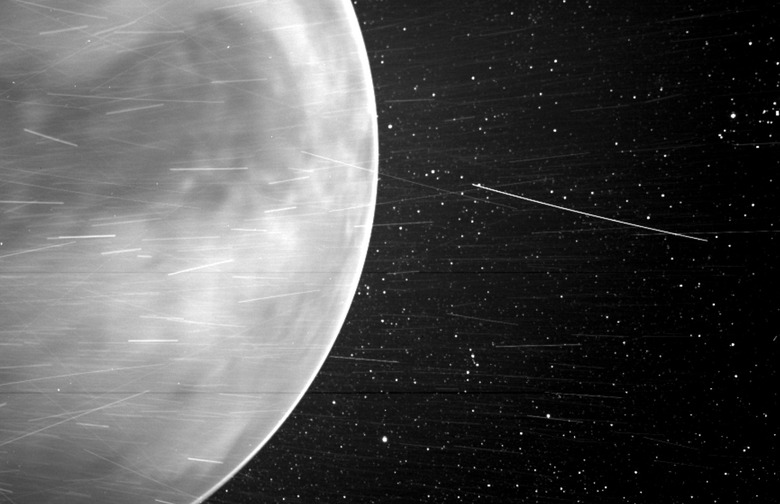Holy Moly, This New Venus Photo Is Just Ridiculous
- NASA's Parker Solar Probe is studying the Sun in ways that were never possible before.
- The probe's; mission has been ongoing for over two and a half years, and while the Sun is its primary target of study, it comes close enough to planets like Venus to capture some amazing images.
- A new photo captured by the probe and published by NASA shows the planet Venus in a way that we've never seen before.
NASA's Parker Solar probe has been on its mission to reveal secrets about our star for over two and a half years already, and while it can only send information back at certain times due to its extreme proximity to the Sun, it has already provided scientists with some very interesting data. The probe is also equipped with a camera, and while studying other planets isn't its primary objective, it managed to snag a photo of Venus that is absolutely bonkers.
As NASA highlights in a new blog post, the photo was originally captured back in July of 2020 but only recently released. The image shows the night side of Venus, complete with what looks like a shower of sparks but what is actually a combination of cosmic rays and pieces of dust and debris that appear as bright dashes. The photo also shows something that scientists weren't necessarily expecting to see: A bright halo around Venus, extending to its dark side.
The instrument on the Parker Solar Probe that made this incredible image possible is called WISPR. It's short for "Wide-field Imager for Parker Solar Probe" (don't ask me how that makes sense), and it was designed to capture images of the Sun's corona, inner heliosphere, and also the solar wind, according to NASA, but it also appears to be pretty good at snapping images of planets as well.

The capture was made possible thanks to the extremely close pass the probe made of Venus. The picture was taken at a distance of just 7,693 miles, which is a mere stone's through in planetary terms, and with the cosmic rays and dust giving the photo extra flair, it's hard not to consider this one of the best photos of Venus ever taken.
But what is that strange glowing halo around the planet? The science team behind WISPR has a pretty good idea. They believe the glow is due to charged oxygen atoms in the planet's atmosphere that drift to the night side of the planet. It's more visible here because it appears brighter than the dark side of Venus.
Interestingly, NASA also learned that the camera is capable of capturing things it wasn't necessarily designed to:
This surprising observation sent the WISPR team back to the lab to measure the instrument's sensitivity to infrared light. If WISPR can indeed pick up near-infrared wavelengths of light, the unforeseen capability would provide new opportunities to study dust around the Sun and in the inner solar system. If it can't pick up extra infrared wavelengths, then these images — showing signatures of features on Venus' surface — may have revealed a previously unknown "window" through the Venusian atmosphere.
NASA scientists will be working out exactly why the image came back the way it did, but in the meantime, we can enjoy it for its aesthetic value.
